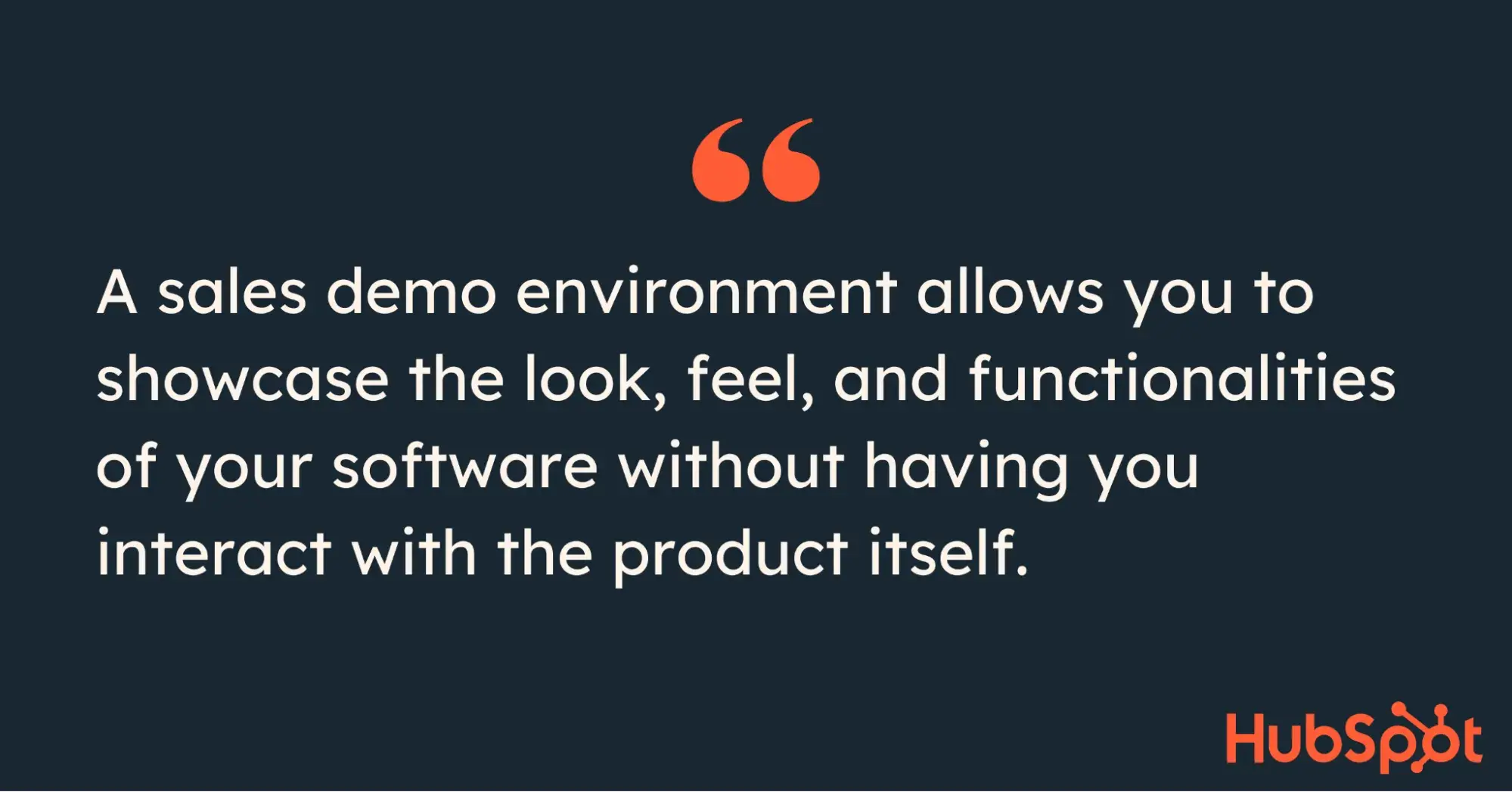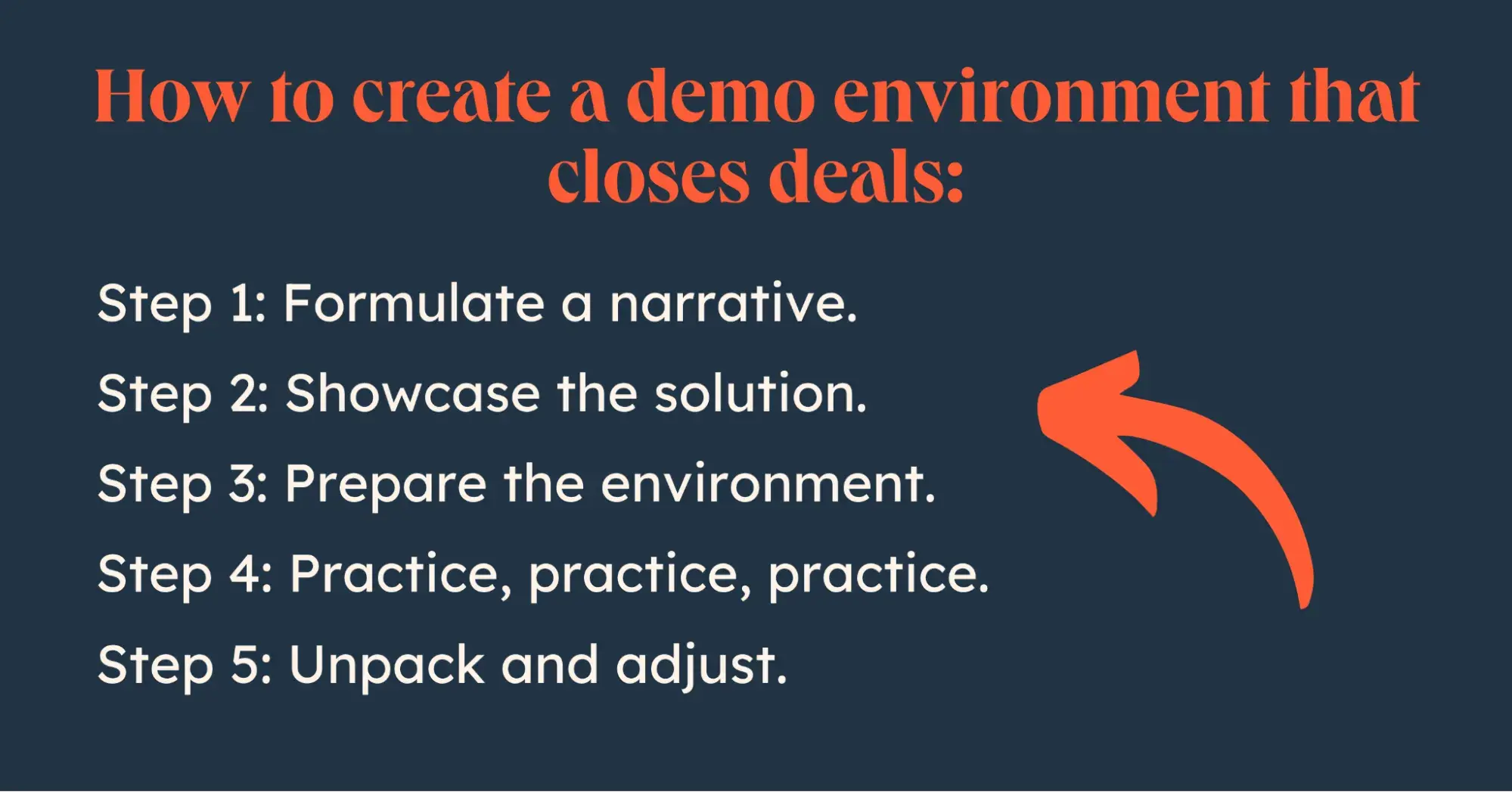Table of Contents
- What Is a Sales Demo Environment?
- Benefits of Using Sales Demo Environments
- How to Create a Demo Environment That Closes Deals
I like to think of it like this: it’s common knowledge that Super Bowl halftime performances are mostly pre-recorded. This practice helps the production team eliminate or at least mitigate a host of potential technical difficulties in a dynamic environment where the stakes are high.
You can think of a sales demo environment in the same way. It allows you to showcase the look, feel, and functionalities of your software without having you interact with the product itself. Bugs are a fact of life in even the most rigorous and careful development process, and a sales demo environment helps you deliver the perfect demo and close more deals by greatly reducing the chances you’ll encounter a technical issue or unanticipated UI adjustment during your walkthrough.
With a variety of sales demo environments to choose from, each catering to a specific need or use case, you can ensure you’re showing prospects exactly what they want to see.

Benefits of Using Sales Demo Environments
I think the benefits of using a sales demo environment speak for themselves, but let’s break them down a bit more. I’ll add some use cases and personal experiences where they fit, too.
Complete Control
Before using a dedicated demo environment, I would often sit down for a demo with a prospect only to discover that the dev team had released a slew of small UI tweaks overnight. These were always welcome improvements, but it’s easy for anyone to get thrown off balance walking through a slightly altered landscape on a live demo.
In contrast, a sales demo environment will always be exactly how you left it, which inspires quite a bit of confidence — particularly for newer reps learning their way around a complex product.
Showcase Specifics
Instead of a cluttered demo account that tries to be relevant to all different kinds of prospects, you can create unique sales demo environments dedicated to specific personas.
With a range of environments to choose from ahead of time, you’re able showcase the features and capabilities that matter the most to each segment of your audience in a concise, streamlined way. And if the use case evolves over the course of additional discovery, you can simply open the relevant demo environment instead of trying to make in-depth changes on the fly.
Scalable Personalization
Armed with a ready-made sales demo environment aimed at a specific use case, you have plenty of time to go in ahead of time and personalize for a particular prospect.
Put the prospect’s company logo in the top corner, add the names of key stakeholders to the example account, and input client info, industry, or other relevant information. I’ve consistently found that basic customizations are an effective way to impress your audience and elevate your product above the competition.
How to Create a Demo Environment That Closes Deals

Step 1: Formulate a narrative.
Each sales demo environment should be built up around the basics: Who is the target audience, and what story are you selling to the market? When I’m setting up a new environment, I always start by establishing why the stakes are high for the prospect in question. What’s the cost of inaction if the prospect fails to convert?
Step 2: Showcase the solution.
A great demo doesn’t walk a prospect through every use case of a product from start to finish.
Out of respect for my prospects’ time (and their limited attention span), I outline which of my software’s features will solve their specific pain points and create a coherent path that connects these selling points in the most logical order.
Step 3: Prepare the environment.
Sales demo environments range in complexity. Although a collection of compiled screenshots could meet the most basic need, I find that it takes a little more effort to really wow a prospect.
If your engineering team doesn’t have the time or inclination to clone your application, you can use tools like Storylane to create a replica of your software with a simple plugin. Armed with an aesthetically identical copy of your product, your sales team can make no code edits of text, images, and other elements to personalize the demo and leave a lasting impression.
Step 4: Practice, practice, practice.
It goes without saying, but you should be intimately familiar with each of your sales demo environments before you’re pitching to the prospect.
A big advantage of the sales demo environment is predictability. If you haven’t adequately prepared to operate in yours, you’re throwing that advantage out the window. Any time I’m giving a new demo, I practice with a colleague. Coworkers all tied up? A lucky family member is about to learn something new about our product.
Step 5: Unpack and adjust.
A sales demo environment is all about improving the experience for both you and your prospect. After each demo, I always go back, look at a recording, and analyze the interaction to find ways to optimize future opportunities.
Look at the script you had in mind for the call. How closely were you able to follow it? Did you devote the amount of time you anticipated to each feature? Did the prospect unexpectedly demonstrate more interest in certain features than others? With a thorough analysis of each call, you’ll learn more about your prospects and the evolving market, getting you closer to the perfect pitch.
Mastering the Sales Demo Environment
Once you’ve mastered the sales demo environment, there’s no going back.
I certainly underestimated the advantage of having my own tailored demo environments, and I could never return to a demo account in a production environment — especially one shared with other sales reps and marketing personnel that was likely to change in subtle ways from one day to the next.
First impressions are critical to closing deals, and sales demo environments help you shape your prospect’s impression of your solution in a way that moves the deal forward. If you haven’t made the leap to a dedicated sales demo environment, give it a shot. If you’re like me, it will make your sales job easier and help you convert more prospects into satisfied customers.


